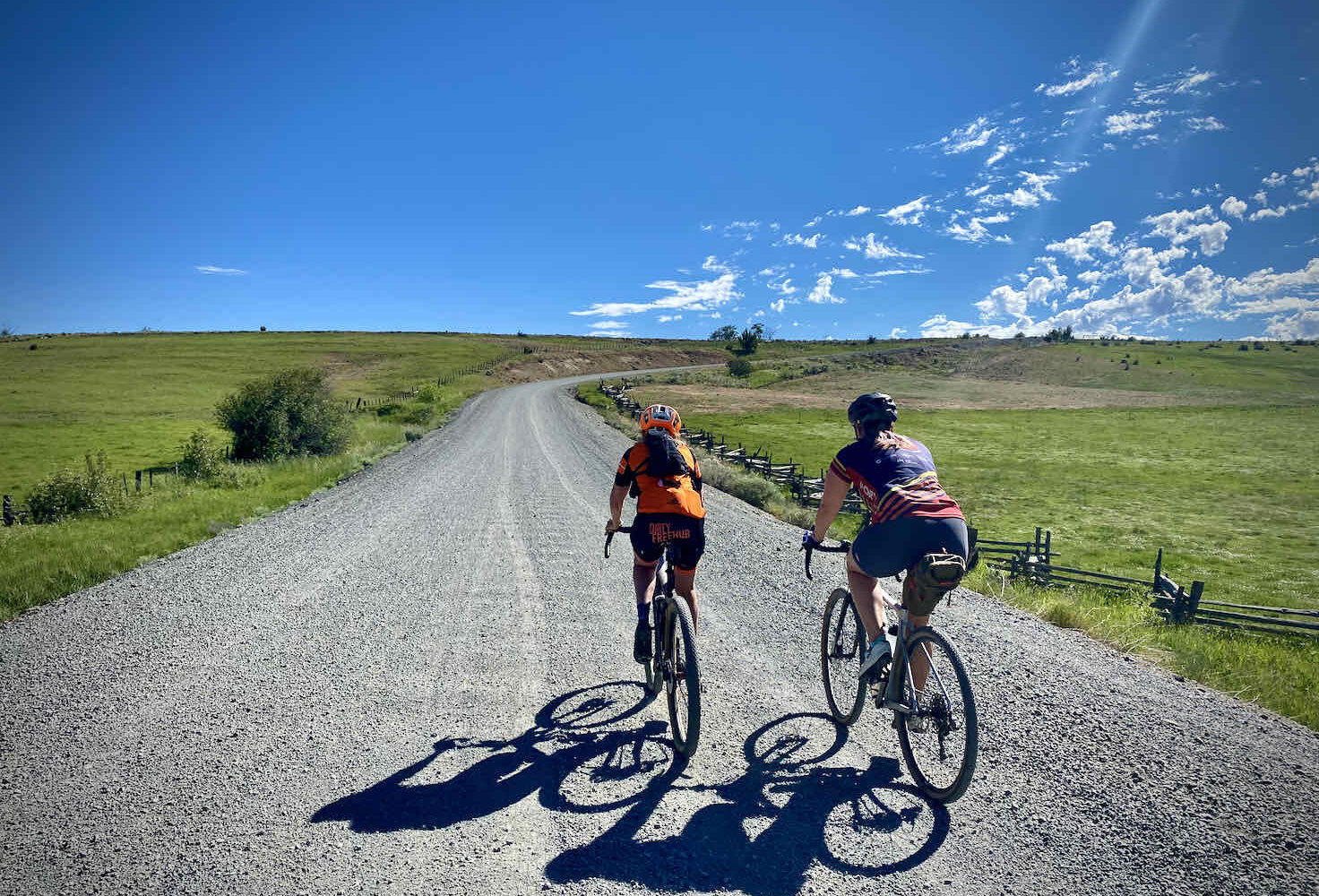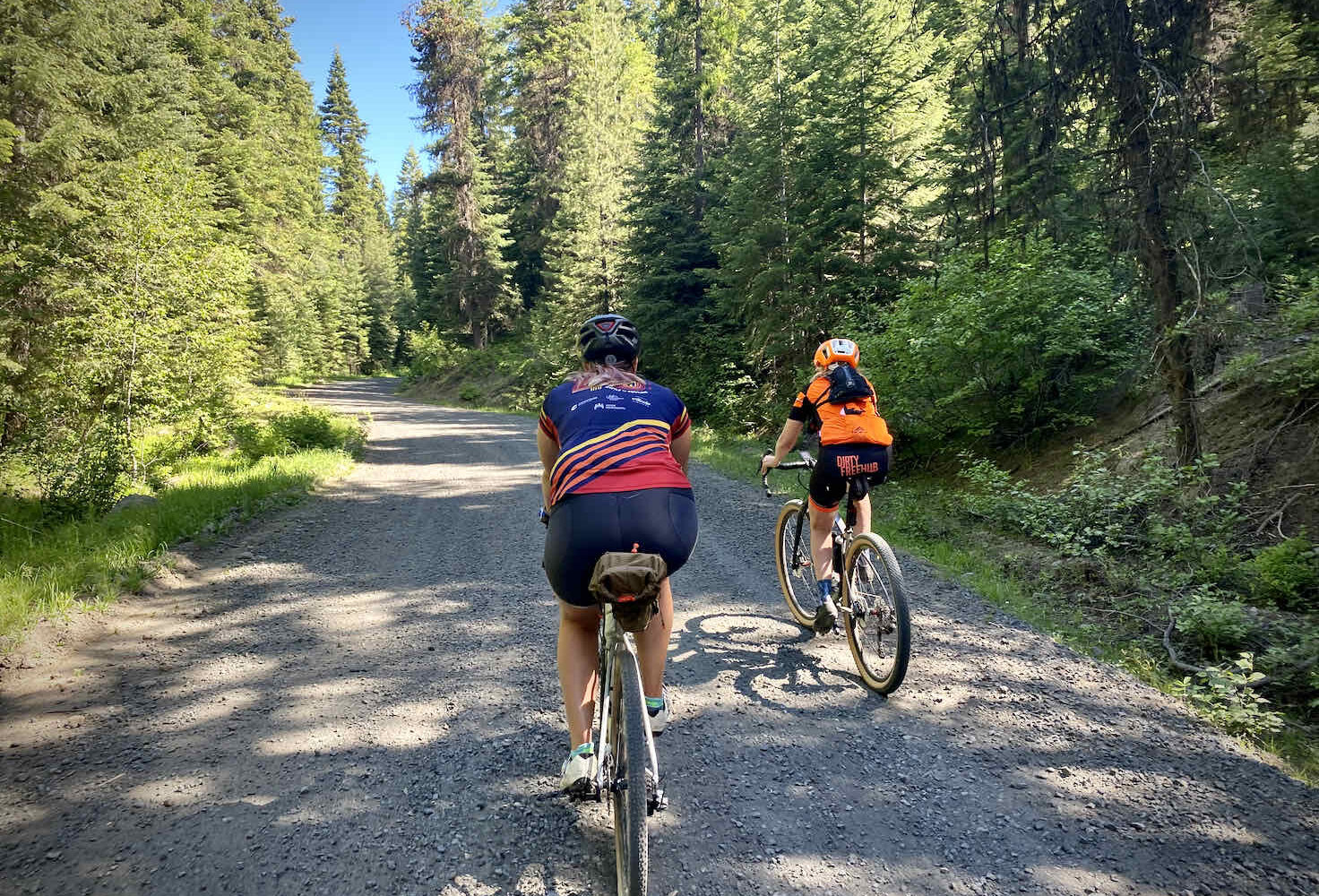Tony!
Caution! We do not provide turn-by-turn directions in our GPX files. Those are auto-generated by your bike computer and are usually less than 70% accurate. Learn more.
For help loading a GPX file onto your bike computer, go here.
DownloadWhen We Like to Ride This
From mid-June to early October. Any earlier and you are most likely to encounter patches of snow. Do not ride when wet; you will encounter a lot of mud up high.
We really like this ride when we are trying to escape the heat in the valley. With an early start, you are soon into the shade cover of the forest and at a higher altitude where it is cooler. We did this ride on a 90+ degree day with an 8:30 am start in mid-June and felt comfortable the entire ride.
Terrain & Riding
Miles 0 to 10 / Dutch Creek Climb / Gravel
The ride starts at a kiosk within the Elkhorn Wildlife Area.
The “area is best known for Rocky Mountain elk and mule deer herds that use the area during the winter. To keep deer and elk from feeding on agriculture lands when they come down from snow-covered higher elevations, ODFW operates 10 feeding sites on the area to feed 1,400 elk and 800 deer during the winter months.” We encountered a herd of 20+ elk very near here. It was a really cool sight to see.
In a 1/2 mile turn left Tucker Flat road. It pitches up quickly through open grasslands and past Pilcher Creek Reservoir. The road is hard-packed with a top layer of pea gravel.
At mile 6, the lands transition from open bald hills to forests with a mix of new growth trees. The next 10 miles climb 2500 feet with a jagged sawtooth profile, difficult pitches, followed by short respites of easy grade.
Miles 10 to 24 / Ladd Canyon Road / Gravel & Dirt
The Ladd Canyon road (NF 43) is more well developed and traveled than the last 4 miles. It rolls and undulates through a relatively young forest. The riding is fast but almost a bit anticlimactic. After a few miles, we were yearning for a change in texture.
And bam! At mile 16, it changes big time! The road becomes primitive with a dirt / clay base. You will encounter rock cobble, sand, and loamy, soft riding. The road follows a ridgeline contour at nearly 6500 feet, where you ride past high alpine meadows and view distant mountains.
There are two “must stop” points. At mile 17.5, there is a viewpoint up and to the right, and at mile 23.9, there is a short spur to the right leading to Grande Ronde lake, the source of the Grande Ronde River.
The Grande Ronde River is 182 miles long, originating in the Blue Mountains. A portion of Grande Ronde and its valley were part of the Oregon Trail. Today a section of the river is designated Wild and Scenic and is nationally renowned for sport fishing. The river is also an important water source for agriculture within the Grand Ronde valley and is also popular for its white water rafting.
Miles 24 to 38 / Anthony Lakes Hwy / Paved
Just after mile 24, intersect Anthony Lakes Highway and go left. Just after the resort, take a right towards the campground and down to Anthony Lake. It will not disappoint!
The downhill begins almost immediately after this. It is one “badass” descent. You can reach 40 mph; with a bit of aerodynamic tuck, you will hit 50 mph. The descent is 11+ miles long with a loss in elevation of 3600 feet. The mountains In the distance are the Wallowas.
Miles 38 to 40 / Miler Road / Gravel (mostly)
At mile 38, go left on Miller Road, a proper gravel road, past ranchlands and farms. It’s a nice finish — flat, scenic, and chill!
The Start
McKean Memorial Wildlife Kiosk parking area. Pit toilets. Parking permit required. Purchase on-line. For the drive to the start take River Lane in lieu of Miller Road, this will keep you on paved most of the way to the start.
Food & Water
- Anthony Lakes resort (The Starbottle restaurant)and the campground at Anthony Lake. Both are seasonal.
Route Notes
We recommend a red blinky light with rear looking radar detector (i.e. Garmin Varia)



























 Behind every route is scouting, mapping, storytelling, and a whole lot of pedal power.
Behind every route is scouting, mapping, storytelling, and a whole lot of pedal power.
Have you ridden this route? Got a question? Join the discussion!